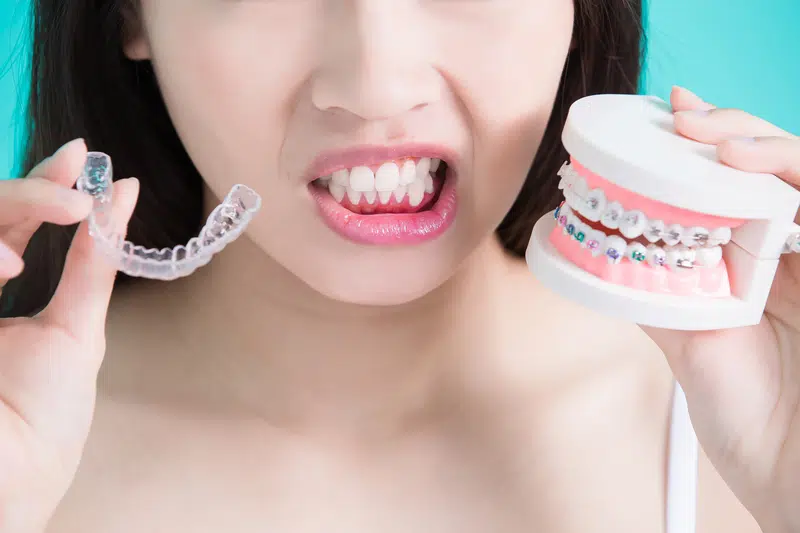
Treatment Options: Braces VS Invisalign
With all the different options for correcting your smile, it can be a challenge to decide which treatment to get. The most common dilemma that our patients have is deciding between traditional braces and Invisalign. In fact, many people start their research long before they come into our office for a consultation. We’ve put together a list of the top considerations our patients and staff examine in order to determine the best treatment option for each individual.
BRACES
-
- Discretion: Typically made out of metal. The wires and brackets themselves are often silver, although more subtle options may be available. This high visibility can be undesirable for those who do not want their treatment to be so obvious.
- Maintenance: Brackets and wire should be brushed regularly, with the same frequency as normal tooth brushing. Flossing is important because food can be easily caught in the many nooks and crannies of braces. Some patients find a water pick to be especially helpful.
- Length of Treatment: On average, a patient with braces will wear them 24/7 for around 2 years. During this time, they will need an orthodontic appointment for tightening and adjustment about once a month.
- Discomfort: Minor discomfort caused by wires, brackets, and tooth movement. There is a chance of bracket breakage, and as such it is important to avoid hard, sticky foods for the duration of treatment.
INVISALIGN
-
- Discretion: One of the most attractive features of Invisalign is its near invisible appliance. The clear, plastic aligners blend in very effectively to a natural tooth colour. Patients who want to maintain their normal look without clunky metal brackets tend to love this aspect of Invisalign.
- Maintenance: As the plastic aligners are removable, it is important to take them out when eating or drinking. This means that the patient’s teeth need to be cleaned after each meal before the aligners are put back in. In addition, the trays themselves should be brushed and rinsed regularly.
- Length of Treatment: Usually, a patient will be required to have their aligner trays in for at least 22 hours a day for 6-18 months. The trays will need to be changed every two weeks with orthodontic appointments every 4-6 weeks.
- Discomfort: Minor discomfort from tooth movement. The plastic aligners are smooth so as not to irritate the cheeks or tongue in the same way that traditional braces might.
Other considerations include the type of treatment required. For example, traditional braces are able to correct more complex issues than Invisalign. In these cases, braces may be the only choice for a patient. Existing conditions such as bridgework can also inhibit a patient’s ability to have Invisalign. This makes a consultation key to your orthodontic success! Contact us today for an appointment. We are happy to discuss all of your options and create a corrective treatment plan unique to your needs.

